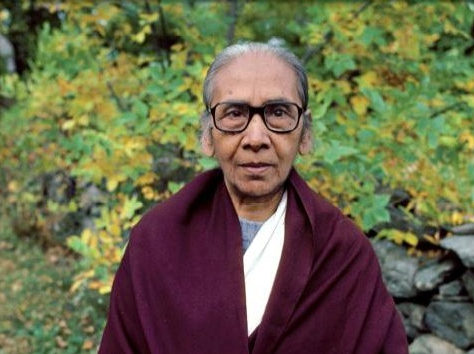Venerable BD Dipananda
Rarely does a story about another person contain so much heart. After reading Dipa Ma, you feel you have actually met her—and you will never forget her.
It was in India, years ago, that I heard her name: “Dipa Ma.” I had no idea who she was, but even the name sounded motherly. Apparently, she was a prominent female Buddhist master in Asia and around the world, but I was still studying and didn’t have time to learn more about her.
As karma would have it, just some weeks ago I picked up a book in the library of Wang Fat Ching She temple. It was by Amy Schmidt and titled, Dipa Ma: The Life and Legacy of a Buddhist Master. I read it several times and also revisited an interview with Dipa Ma called “Enlightenment in this Lifetime: Meetings With a Remarkable Woman” published by Tricycle in 2004. The interview was hosted by Jack Engler and took place in Calcutta in 1977. Delving deeper, I phoned Venerable Shilananda, one of my masters in Bangladesh, and asked about Dipa Ma. I was astonished when he told me that she was born in my neighboring village, Padua, in Chittagong. I never met this woman and she has long gone. But her proximity to my home and heart led me to feel that I actually met her, and that I will never forget her.
Rarely does a story about another person contain so much heart. After reading Dipa Ma, you feel you have actually met her—and you will never forget her.
—Paul Hawken, co-author of Natural Capitalism
 |
| Dipa Ma |
It was in India, years ago, that I heard her name: “Dipa Ma.” I had no idea who she was, but even the name sounded motherly. Apparently, she was a prominent female Buddhist master in Asia and around the world, but I was still studying and didn’t have time to learn more about her.
As karma would have it, just some weeks ago I picked up a book in the library of Wang Fat Ching She temple. It was by Amy Schmidt and titled, Dipa Ma: The Life and Legacy of a Buddhist Master. I read it several times and also revisited an interview with Dipa Ma called “Enlightenment in this Lifetime: Meetings With a Remarkable Woman” published by Tricycle in 2004. The interview was hosted by Jack Engler and took place in Calcutta in 1977. Delving deeper, I phoned Venerable Shilananda, one of my masters in Bangladesh, and asked about Dipa Ma. I was astonished when he told me that she was born in my neighboring village, Padua, in Chittagong. I never met this woman and she has long gone. But her proximity to my home and heart led me to feel that I actually met her, and that I will never forget her.



